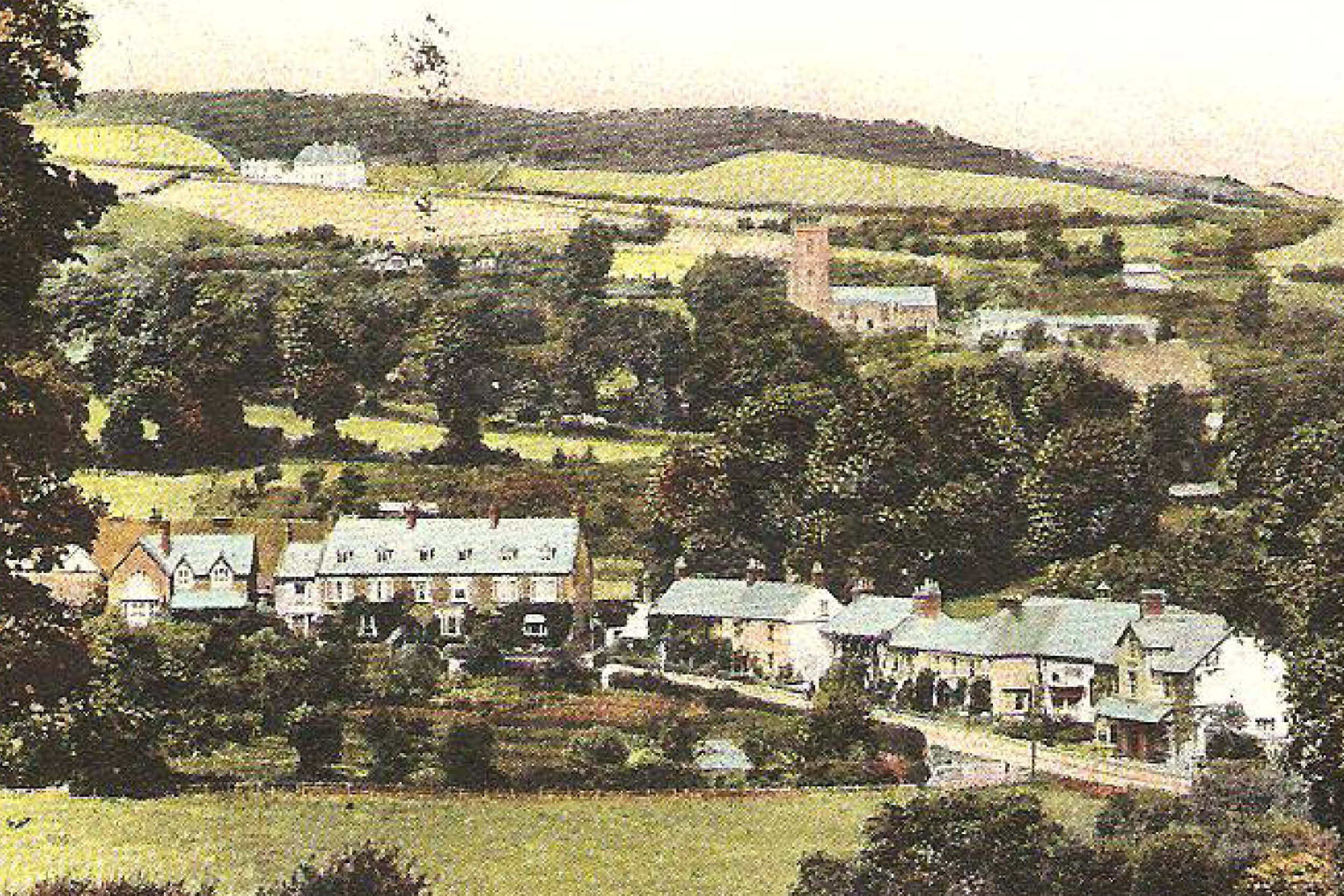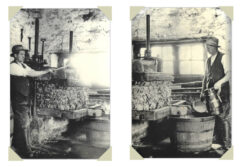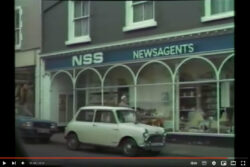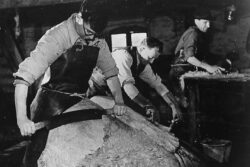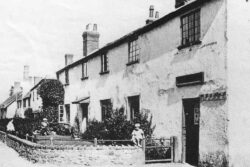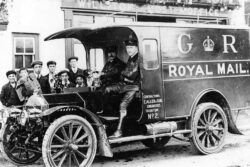Minehead benefits from a great variety of open spaces from formal and natural to recreational. All of them providing something different to those who seek them out.
Beyond the harbour you find Culvercliffe which provides the first leg of the Coast to Coast walk from Minehead. One one side you can enjoy the views across to Wales and on the other the steeply wooded hillside of North Hill. Wildlife is abundantly catered for amongst the naturalistic layout of grass, wildflowers and newly planted tree avenue.
In a completely different vein are the formal Blenheim Gardens with its plentiful seating, attractive flower borders and many mature trees providing shade. It states in the 1913 Ward Lock Guide of Minehead ‘On the east side of the pretty Blenheim Road are several acres of well-wooded land which the council has recently acquired as Winter Gardens.’ However by 1925 it had become an amenity area laid out with formal gardens.
At the east end of town to the west of Seaward Way, near Tesco is the Millennium Rose Garden whilst on the east side of the road is what I call ‘The Swan Lake‘ walk which stretches from the boundary of Butlins to the main Road. This area attracts a variety of water fowl and other birds.
Not to be the forgotten is the Marine Walk laid out on North Hill at Mr Luttrells’ expense which leads to Greenaleigh Farm where cream teas and junket were once served.
We have Molly’s Patch up behind St Michael’s Church left in a bequest to the town by Molly Keivell daughter of the well regarded Minehead builder Mr Burgess. Scenic views can be obtained from here.
The Parks Walk. Back in 1279 in the reign of Edward I it was recorded that Minehead had a park and again in the C15 when it was described as:
‘A park for preservation of wild animals for the lord’s table,it was also used for common grazing at times.’ The lord was a Luttrell and the wild animals probably deer, boar and fowl. John Leland who travelled through Somerset in the 1540’s also mentions it. ’There was a fair park by Minehead but Sir Andrew Luttrell of late time destroyed it.’
The area we now know as The Parks Walk has been created on part of that land set in the valley between the hills. It consists of three distinct parts and took 60yrs to complete. The first section was The Parks Walk started in the 1930’s which runs from an access in Parkhouse Road to its junction with Periton Lane. It was planned specifically to provide ‘ health, quietness and rest ‘ for residents. Projects like this were typical of the attitude of the Town Council in the 1920’s which could see, if it was not careful, the essence of Minehead disappearing with the increased noise and traffic which came with the town’s growth.
The inspired concept for this is attributed to Dennis Holmes, Parks Superintendent of the Urban District Council. Indeed he was responsible for laying out the first two walks. The whole walk follows the course of the Bratton Stream which was originally harnessed to provide power to the Town Mill in Bampton Street- now converted into flats. The stream once flowed above ground via the main street to the sea but is now culverted. There is a branch off the stream at Mill Bridge (1927) in Parkhouse Road where a sluice diverted it into the former Mill Leat .
Not far into the walk you come across a delightful cobbled bridge and just beyond that on a corner is one of three magnificent Lombardy Poplar trees. This walk was laid out with circular flower beds paths around them. Halfway along the path is crossed by a footpath leading left to Lower Park and right into The Parks. Towards the end is another stone bridge crossing the stream which has sadly had its cobbled surface tarmacked over. Near here are Lombardy Poplars two and three. At the end of this walk the path crosses the lane.
The stream briefly disappears only to re-appear in section two known as The Woodcombe Walk. As you cross the road notice a small white building with a plaque on it (see wording in photo) This building was part of the former kennels of the Minehead Harriers. Beyond that was once the rugby club’s ground.
This walk is laid out as an Arboretum, which is botanical collection of tall trees of different species from all over the world. Started by Dennis Holmes and continued by Chris Adams who increased the variety of trees from every continent. Sadly one or two, like the Swamp Cypress, have been lost and not replaced with like for like. These trees are mainly younger than those in the Parks Walk. The large number of Acers provide splendid Autumn colour The Handkerchief tree, also called the Dove or Ghost tree, a native of China creates much interest.
It was here that Minehead Conservation Society chose to plant a tree to commemorate the Queen’s 90th birthday. It is a Cerasifera Nigra which is known to have the darkest of purple leaves.
A Midland Hawthorn was donated by nearby residents to replace a fallen tree. Each section has benefited from individual or organisation donations. Recently, the Council has planted a number of new ones which appear to be doing well.
Kingfishers have been seen flying along the stream which has clumps of Gunnera beside it and woodland birds especially buzzards can often be seen over Whitecross Woods to the right.
There is another stone bridge over the stream. In the 1930’s photos a girl can be seen sitting on this bridge when the land was still a water meadow and feeding the horses grazing there.
The walk narrows as it reaches the Porlock Road where one has to cross again to reach the Bratton Walk the final and shorter leg. This was not created until 1971 and is quite wide at the start being on both sides of the wooden bridge. Notice the veteran English Oak situated on a mound as you turn towards the pond. This is often full of tadpoles in Spring. Beyond the pond is an interesting Dogwood which was raised in Porlock by Norman Haddons in the 1920’s.
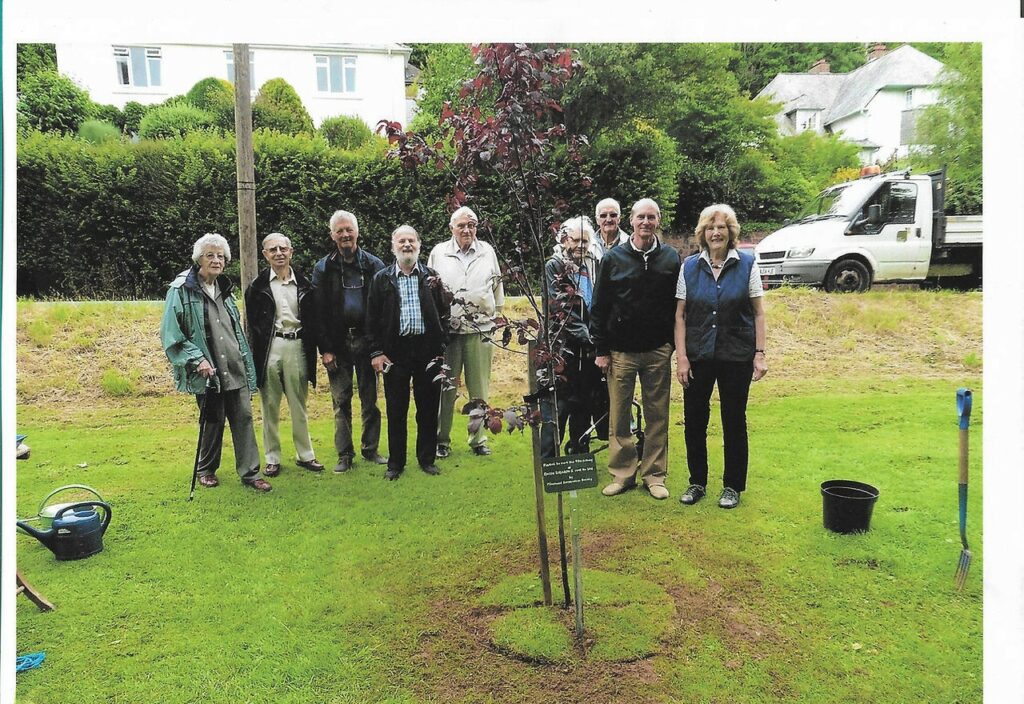
He was a well known botanist and horticulturist and held the RHS Medal of Honour. He amassed a collection of exotic trees in his own garden at ‘Underway’ in West Porlock.
The three walks end where the metalled path turns right up into Woodcombe Lane. To the left a footpath continues through a grove of trees to Bratton. These walks provide a valuable green lung to the west of Minehead enabling people to be able to walk to and from town safely or simply enjoy the ambience. There are seats where you can rest and watch and still enjoy the quiet moments in healthy surroundings the scheme originally set out to provide. What a wonderful legacy we have inherited.
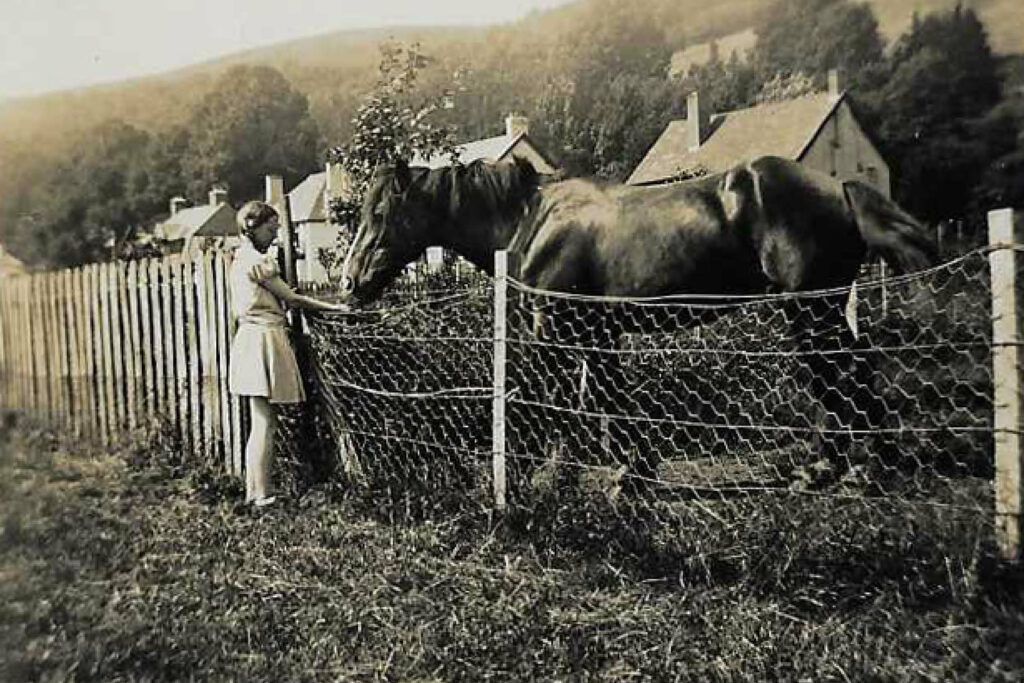
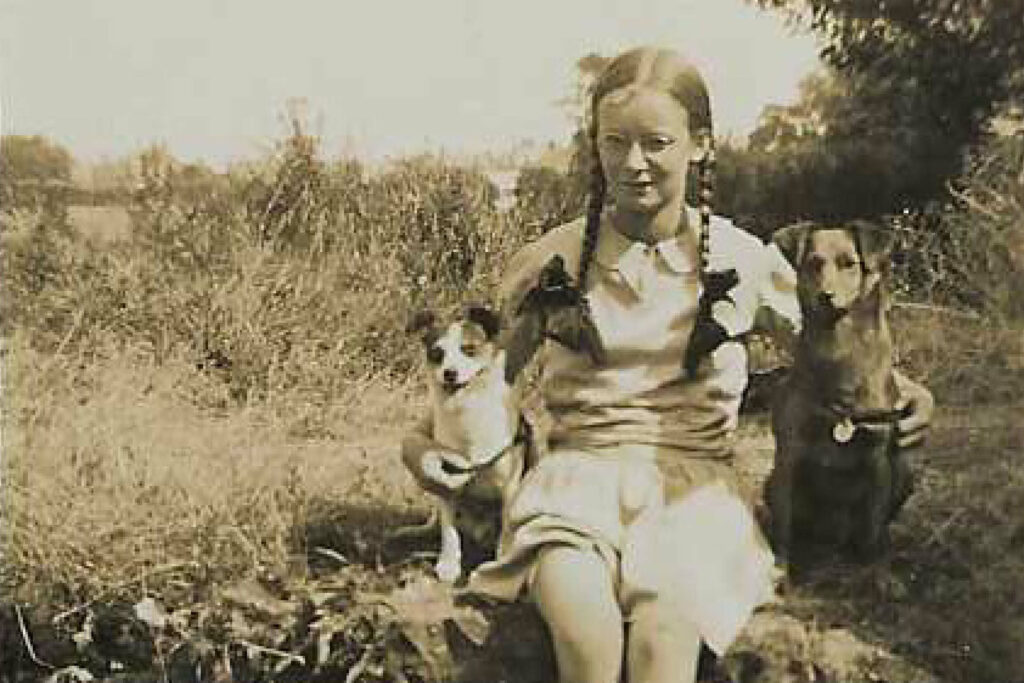
Compiled by Sally Bainbridge on behalf of Minehead Conservation Society.
Buy the book! Minehead & Beyond
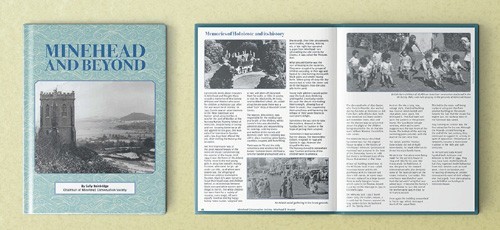
This book is a compilation of articles written for this magazine by Sally Bainbridge on behalf of Minehead Conservation Society. It contains information about the richness of West Somerset’s history; culture; people; heritage; traditions and beautiful and varied landscape. The book costs just £5 and all profits go to Minehead Conservation Society.
Available to buy from AR Computing, Park Lane Home Furnishing (in their Park Lane shop), Minehead Tourist Information Centre and Townsend House (Monday am).
Office: Townsend House, Townsend Road, Minehead TA24 5RG (01643 706258) E-mail: [email protected]
